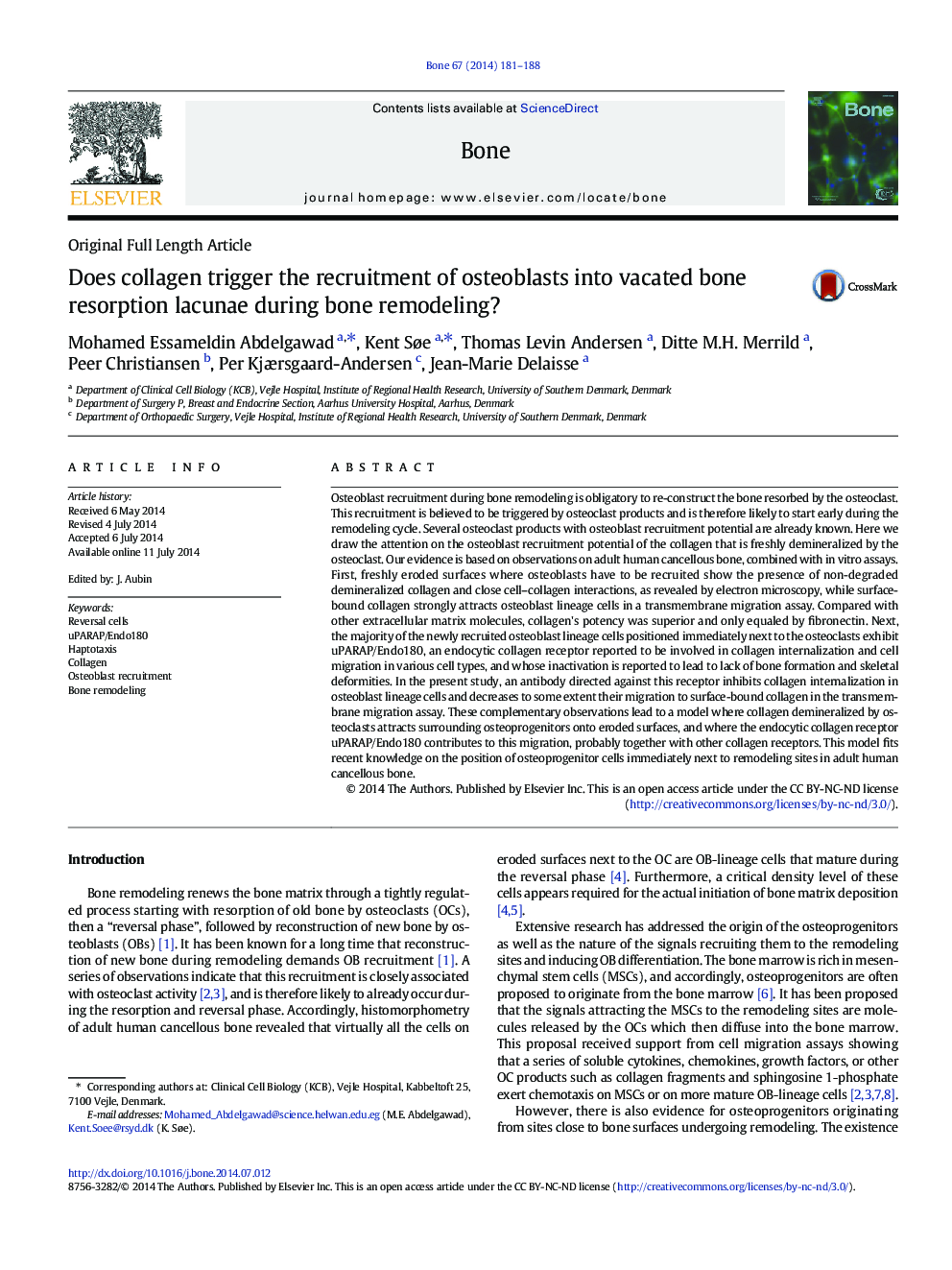| کد مقاله | کد نشریه | سال انتشار | مقاله انگلیسی | نسخه تمام متن |
|---|---|---|---|---|
| 5890330 | 1568152 | 2014 | 8 صفحه PDF | دانلود رایگان |
- Bone surface sites where reversal cells are recruited show demineralized collagen.
- Most early reversal cells show the presence of the endocytic collagen receptor uPARAP/Endo180.
- Surface-bound collagen induces a haptotactic response of osteoblast-lineage cells.
- An antibody directed against uPARAP/Endo180 inhibits the latter haptotactic response.
Osteoblast recruitment during bone remodeling is obligatory to re-construct the bone resorbed by the osteoclast. This recruitment is believed to be triggered by osteoclast products and is therefore likely to start early during the remodeling cycle. Several osteoclast products with osteoblast recruitment potential are already known. Here we draw the attention on the osteoblast recruitment potential of the collagen that is freshly demineralized by the osteoclast. Our evidence is based on observations on adult human cancellous bone, combined with in vitro assays. First, freshly eroded surfaces where osteoblasts have to be recruited show the presence of non-degraded demineralized collagen and close cell-collagen interactions, as revealed by electron microscopy, while surface-bound collagen strongly attracts osteoblast lineage cells in a transmembrane migration assay. Compared with other extracellular matrix molecules, collagen's potency was superior and only equaled by fibronectin. Next, the majority of the newly recruited osteoblast lineage cells positioned immediately next to the osteoclasts exhibit uPARAP/Endo180, an endocytic collagen receptor reported to be involved in collagen internalization and cell migration in various cell types, and whose inactivation is reported to lead to lack of bone formation and skeletal deformities. In the present study, an antibody directed against this receptor inhibits collagen internalization in osteoblast lineage cells and decreases to some extent their migration to surface-bound collagen in the transmembrane migration assay. These complementary observations lead to a model where collagen demineralized by osteoclasts attracts surrounding osteoprogenitors onto eroded surfaces, and where the endocytic collagen receptor uPARAP/Endo180 contributes to this migration, probably together with other collagen receptors. This model fits recent knowledge on the position of osteoprogenitor cells immediately next to remodeling sites in adult human cancellous bone.
Journal: Bone - Volume 67, October 2014, Pages 181-188
